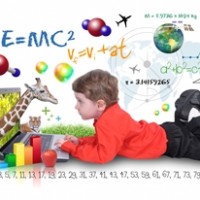When you're helping your children with their Common Core State Standards test prep or homework, what is it that really helps them understand a difficult concept? Do they learn best from demonstrations or other visual aids, or do concepts make the most sense to them after getting involved in the lesson themselves? Every child has a unique learning style, and when teachers and parents understand how their children learn, they can use that to teach concepts in clear and efficient ways.
Education experts have narrowed children's learning styles down to these three distinct categories:
1. Kinesthetic
Kinesthetic learners are also known as tactile: They learn best when they're able to move, touch or be otherwise personally involved in the lesson. If your child is a kinesthetic learner, he or she may not be able to sit still during lessons, and would prefer to learn while doodling, taking notes or even pacing. In fact, this learning style is often misdiagnosed as an attention deficit disorder because of children's need to move around. You can help a kinesthetic learner understand a concept by making it more hands on. For instance, have him or her act out a particular scene in the reading or use blocks or drawings to understand a math problem.
2. Auditory
Auditory learners, as the name suggests, have very strong listening skills and are great at learning through what they hear. Your child may be an auditory learner if he or she understands complicated ideas by talking them through with friends or teachers or excels in group discussions. If you have children who are auditory learners, help them with their Standards practice tests by allowing them to tell you about the different concepts and ideas, rather than simply reading or writing about them. Auditory learners also respond really well to musical or oral lessons, so try creating tunes or mnemonic devices to help your children remember information.
3. Visual
You'll recognize if your child is a visual learner if he or she responds well to things like drawings, graphs, charts and other visual aids. Visual children are adept at learning from written instructions, slideshows, videos and demonstrations, and they often won't understand something simply from hearing about it. If visual learning is your child's biggest strength, help him or her understand ideas by using flash cards and pictures. You can even color code in-depth concepts to relate abstract ideas to something your child can see.


No comments yet.